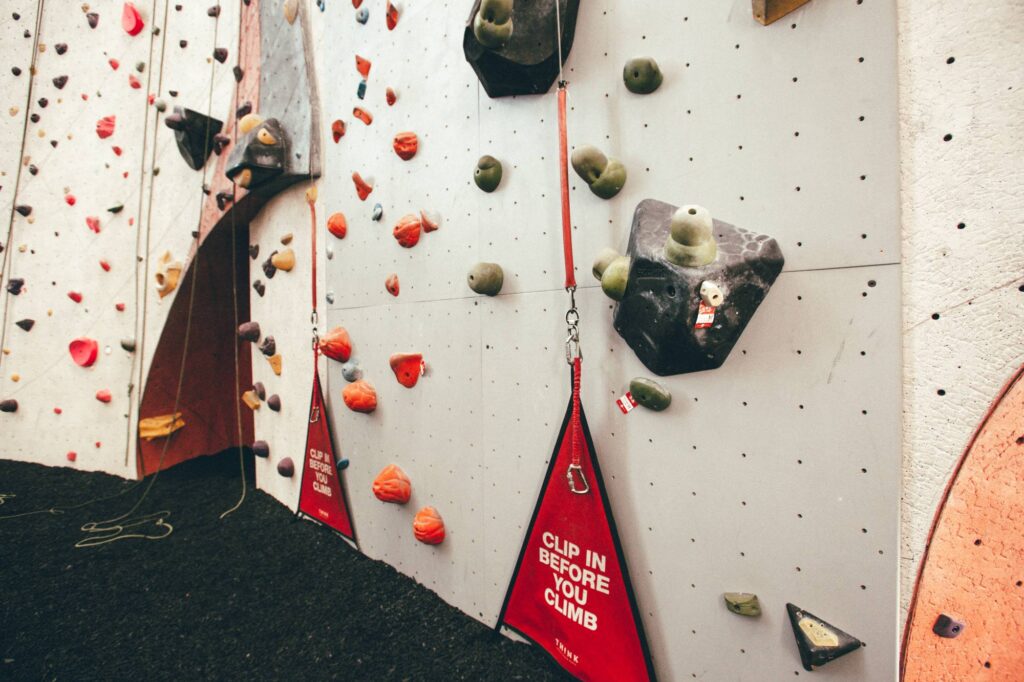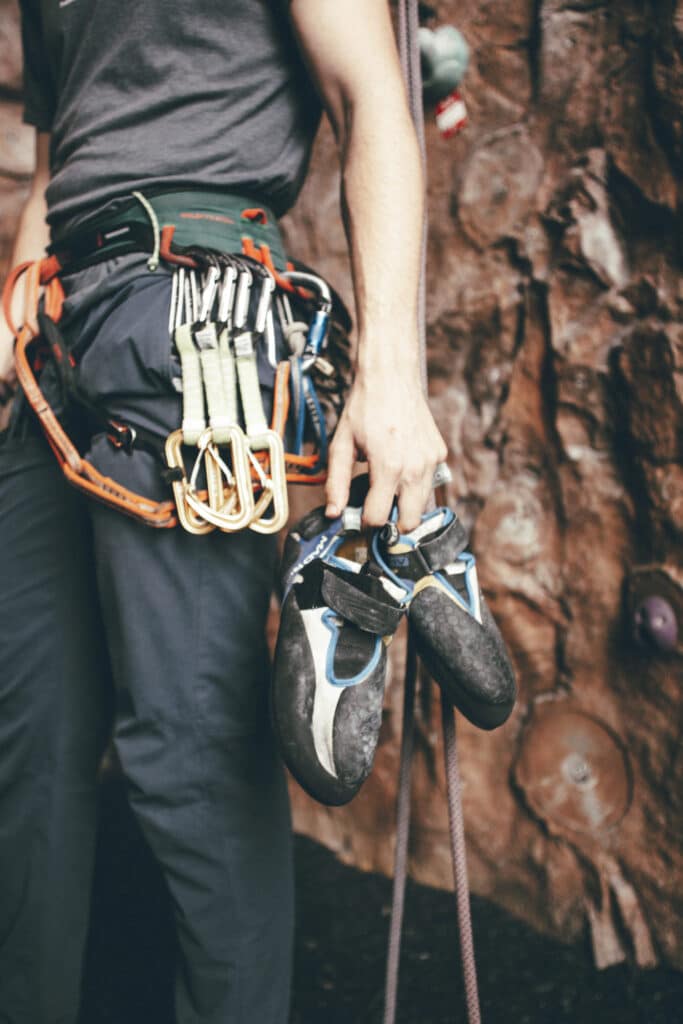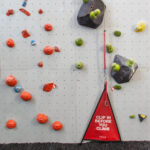Auto Belays: Pros and Cons
An auto belay is a mechanical device that is used in rock climbing to provide an effective and efficient way of lowering a climber to the ground after they have completed their climb. They eliminate the need for a climbing partner who belays the climber, belaying is manually controlling the rope to hold the climber and ensure that they do not fall to the ground. Auto belays have become popular in many indoor climbing facilities.
They often incorporate a system of pulleys; a rope, cable, or lanyard; a method of retraction that takes up slack as the individual ascends, automatically catches, and lowers the climber at a controlled speed. The auto belay provides a controlled descent using magnets, centrifugal force, or hydraulics as a braking mechanism. While they offer many benefits, there are also drawbacks to using an auto belay. Let us explore some of the pros and cons of auto belays.

Pros of Auto Belays:
1. Solo Climbing:
Auto belays allow climbers to climb without a belay partner, which means they do not need someone else to belay them. This makes it easier for climbers to get their climbing fix or workout in without having to coordinate with someone else. Additionally, it is a great option for those who want to train without the distractions of a partner.
2. Cost-effective:
Auto belays are more cost-effective than hiring a belayer or purchasing all the climbing gear. With an auto belay, you can climb to your heart’s content without having to worry about the cost of buying all the gear necessary to belay. For those just entering the sport, it gives them time to spread out the expense of having to have all the extraneous equipment right away.
3. Timesaving:
Auto belays can help you save time at the gym. With a partner, you have to take turns climbing and belaying. With an auto belay, you can climb as much as you want, as often as you want, without having to wait for your partner to take their turn.

4. Reliable:
Auto belays are designed to be reliable. They are engineered to catch falls quickly and efficiently, which makes them a great choice for beginners or climbers who are less experienced. Additionally, auto belay manufacturers recommend climbing facilities to perform regular inspections and maintenance to keep them operating effectively.
5. Flexibility
Auto belays can be used in a variety of settings, from easy to difficult climbs. Additionally, they can accommodate many different types of climbers. Most auto belays can facilitate climbers from 25 to over 300 lbs. (If a climber weighs less than 25 lbs., a rope or “monkey tail” could be attached to the back of their harness to help pull them down in some cases.)
Cons of Auto Belays:
1. Mechanical failure:
One of the biggest concerns with auto belays is mechanical failure. If the device fails to work properly, the climber could fall along distance or experience ground impact, potentially resulting in injury or even death. That is why Vertical Endeavors regularly inspect and maintain auto belays to ensure that they are working properly. However, equipment failure is rare.
A good rule to remember when climbing an auto belay is to NEVER CLIMB INTO SLACK! If the rope or cable is not retracting correctly, then something is wrong. If a climber notices the rope or cable dangling at their knees or feet, they should attempt to downclimb to a safe height and notify the staff immediately.

2. No “Double Check” Procedure:
Because all climbing is inherently dangerous, climbers are taught and should practice a routine of checks and double checks prior to leaving the ground. The climber checks that their safety equipment and systems have all been appropriately set-up (harness is on correctly, knots have been appropriately tied, and the belayer is ready). The belayer also checks that they are ready to go (harness is on and buckled correctly, belay device is set-up properly, and the rope is ready and threaded right). Then the climbing partners DOUBLE CHECK one another before the climber begins to climb.
Auto belays eliminate the need for this exchange between the climber and the belayer. This lack of communication can be a disadvantage. An individual might forget, become distracted, or negligent without having another person their to make sure they are appropriately ready to climb. Therefore, it is vital for individuals climbing on an auto belay to religiously check and double check their own equipment and attachments to the system.
3. Limited Training:
Auto belays can limit a climber’s training opportunities. Climbers who rely solely on auto belays may not have the opportunity to practice lead climbing or belaying, which can limit their skill development and progression in the sport. Also, auto belays cannot be set on extreme overhanging routes, roofs, or ceilings due to the nature of the system. Therefore, climbers utilizing auto belays will not have the change to challenge themselves on this type of climbing terrain.
4. Lack of Challenge:
Auto belays can provide a false sense of security for climbers. Because the device automatically catches falls, climbers may not experience the same level of challenge or risk as they would with a human belayer. One aspect of climbing is the adventure and excitement of pushing your limits. Whether that is conquering your fear of heights, disdain for falling, or lack of trust in your equipment and partner, climbing is challenging. Climbing on an auto belay can remove some of those challenges (which may be good for beginning climbers) and keep us from conquering some personal demons.
There are several ways that Vertical Endeavors makes auto belays a fun and exciting aspect of climbing. Instructions on the proper use of auto belays is part of every orientation for new climbers in our facilities. Every climber 12 years old and older must demonstrate that they can correctly attach to the auto belays. Children under 12 years old must be clipped onto an auto belay by a supervising adult.
There is also a “double clip” system for attaching to auto belays at Vertical Endeavors. Two locking carabiners must be appropriately attached to a climber’s harness. One is attached to the rope/cable, and one is attached to a lanyard that serves as a back-up. This guards against a single carabiner unclipping and leaving the climber unattached. It also keep someone from losing their grip on the rope/cable and having the auto belay retract and send the rope/cable up to the top with no one attached. Additionally, it can help the climber pay attention to what they are doing and reminds them that they must check and double-check their system before leaving the ground.
Finally, Vertical Endeavors incorporates belay warning flags or the Nicros Auto Belay Safety System™ that remind climbers to clip-in before climbing. It is unbelievable that someone would begin to climb without checking to see that they are appropriately clipped in, but it has happened. Mechanical failures are rare, but human failure is the main cause of auto belay incidents and injuries. Auto belays offer many benefits to climbers. However, we recognize that there are also some drawbacks to using auto belays. They have been a good addition to the sport of climbing in that they provide a convenient way for beginners to enter the sport, an opportunity for climbers to climb and train without a partner and facilitate a variety of programs and applications. But, everyone using an auto belay must continue to diligently check the system, double-check everything before climbing, and follow all the appropriate rules and procedures. If you have a question or concern about auto belays, do not hesitate to ask a facility staff member.
Climbing is dangerous, it involves inherent and other risks and cannot be eliminated. The information presented here does not describe all of the risks associated with climbing and is not intended to replace or supersede expert instruction and training.
© 2023 Vertical Endeavors, Inc. All rights reserved. The contents of this article, photographs, and graphical representations are protected by U.S. and International copyright laws. Reproduction and distribution, in part or whole, without written permission from Vertical Endeavors are prohibited. The opinions and information contained in this article are for entertainment and informative purposes. They are those of the author and may not represent those of Vertical Endeavors, and do not necessarily reflect the ideas, ideologies, opinions, or points of view of the organization, affiliates, owners, stockholders, partners, suppliers, licensors or staff. Under no circumstances shall Vertical Endeavors or any entity that are, have been, or will be affiliated be liable for any indirect, incidental, consequential, special, or exemplary damages arising out of or in connection with the information contained in this article.

